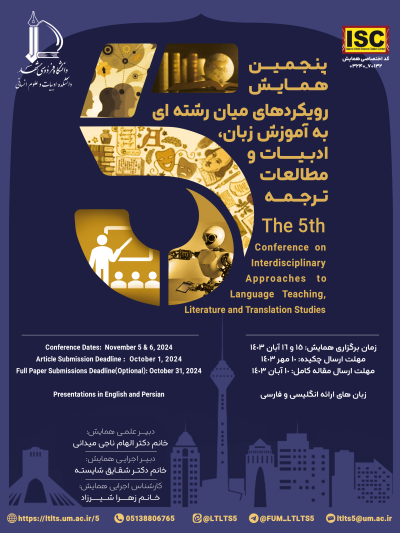0% Complete

نویسندگان :
کلمات کلیدی :
چکیده :
لیست مقالات بایگانی شده
Saeedeh Mansouri - Saeed Safdari
Mohammad Sadegh Zadboom
Pegah Shahidi - Samar Ehteshami
اکرم افخمی - رامین محرمی
آناهیتا امیرشجاعی - مریم قدرتی
Reza Khany - Mohammad Mahdi Maadikhah
Fatima Sadat Yahyapoor

